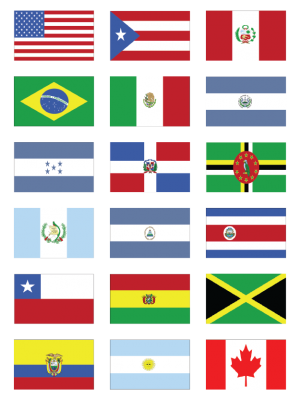The Americas comprise the totality of the continents of North and South America. Together, they make up most of the land in Earth’s western hemisphere and comprise the New World.
The population is over 1 billion, with over 65% of them living in one of the three most populous countries (the United States, Brazil, and Mexico).
North America — the continent and associated islands of the northern hemisphere and (chiefly) western hemisphere. It lies northwest of South America and is bounded by the Atlantic, Arctic, and Pacific Oceans.
Middle America — the territory between the southern Rocky Mountains and the northern tip of the Andes. This isthmus marks the transition between North and South America. It may also include the Caribbean.
Central America — the narrow southern portion of mainland North America connecting with South America, extending from the Isthmus of Tehuantepec to the Isthmus of Panama; alternatively, the Trans-Mexican Volcanic Belt may delimit the region on the north.
Caribbean — the region between southeastern North America and northern South America consisting of the Caribbean Sea, its islands (most of which enclose the sea), and the surrounding coasts. The islands—composed of the Greater Antilles, Lesser Antilles, and the Bahamas—are also known as the West Indies (or, in some languages, the Antilles); they are often included in the region of Middle America.
South America — the continent and associated islands of the western hemisphere. It is chiefly in the southern hemisphere and lies between the Atlantic and Pacific Oceans, southeast of North America.


